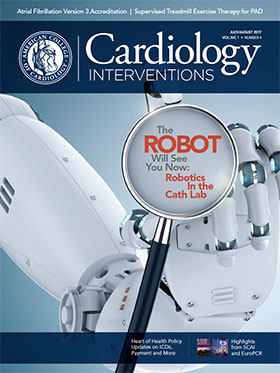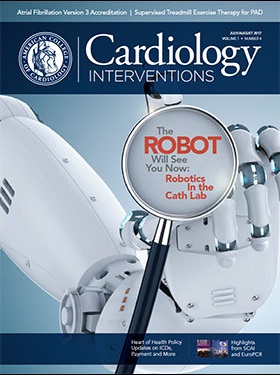Hypo-attenuating leaflet thickening (HALT) with or without hypo-attenuation affecting motion (HAM) were identified as common findings after transcatheter and surgical aortic valve replacement (TAVR, SAVR) in a recent study published in the European Heart Journal. Researchers found HALT and HAM could develop or regress at variable and sometimes prolonged intervals following TAVR or SAVR. Read More >>>
The study looked at 105 patients enrolled in the SAVORY registry who were treated by TAVR (n = 75) or SAVR (n = 30). Patients underwent two four-dimensional volume-rendered computed tomo-
graphy (4DCT) scans at <3 months and >3 months after valve implant-ation and received unchanged anti-thrombotic medication between scans. Researchers, led by Lars Sondergaard, MD, performed logistic regression analysis to assess HALT and HAM, while accounting for baseline variables like timing of the 4DCT scans, valve type and antithrombotic treatment.
"This suggests that the period during which the phenomenon may start to develop is not restricted to a brief window after valve implantation, but may develop over a prolonged period." — Lars Sondergaard, MD, et al.
Overall results showed HALT in 32 patients (38.1 percent) and HAM in 17 (20.2 percent). Of these, progression was identified in 13 patients (15.5 percent) and regression in nine patients (10.7 percent). “The likelihood of observing progression was not influenced by the timing of the first CT scan,” noted Sondergaard, et al. “This suggests that the period during which the phenomenon may start to develop is not restricted to a brief window after valve implantation, but may develop over a prolonged period. However, our results do not exclude the early development and the earliest scan showing HALT was obtained 21 days after valve implantation.”
Additional findings showed HALT progression was less likely among patients in both the TAVR and SAVR groups who were taking oral anticoagulation with vitamin-K antagonists (VKA) or non-VKA oral anticoagulants (odds ratio, 0.014; p = 0.036). Maintenance on chronic oral anticoagulation was found not to be a significant predictor of regression.
“Results suggest a possible protective effect of oral anticoagulation, and do not exclude occasional regression without anticoagulation,” researchers said. “However, the findings here are only hypothesis generating and need confirmation.” They also suggest further research into the role of HALT and HAM in potential cardioembolic events.
In a related editorial, Jeroen J. Bax, MD, PhD, FACC, and Victoria Delgado, MD, PhD, highlight that “the temporal development of bioprosthetic aortic valve thrombosis as detected on 4DCT” is a novelty of the study. “Is there progression, regression, or are there no changes at all?” they ask. “This information could have major implications for the type and duration of oral anticoagulation or antiplatelet therapy.”
Sondergaard L, De Backer O, Kofoed KF, et al. Eur Heart J 2017; July 4:[Epub ahead of print].
<<< Return to top


